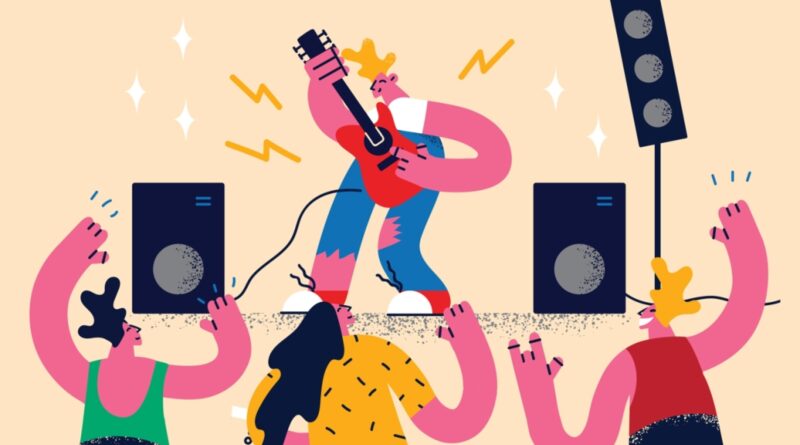Is TikTok Actually Creating More One-Hit Wonders?
Artistes
The portion of artists who failed to follow-up their first hit has been relatively constant in the last two decades — but rose in 2020.
CarmelStudio/GI
It’s an uneasy time in the music industry. During a Jan. 31 call with analysts, Spotify CEO Daniel Ek emphasized the positive side of the streaming revolution — “there [are] a lot more artists that are mattering now than ever before” — while still acknowledging the anxiety that’s percolating through the business. “The big counter to that would be: Does it mean that you can sustain yourself, or does it mean we have more one-hit wonders?” Ek asked. “You’re seeing a little bit of both happening in the music industry at the present moment.”
Especially in an era when TikTok appears to run the music industry — trends on the app can send songs bounding up the charts, impacting signing decisions and marketing campaigns — it’s common to hear executives fretting about one-hit wonder overload and the lack of “artist development.” On any given day, a handful of songs flare on the app, soundtracking heaps of videos and leading to jumps in streaming. As a result, “more people are investing in songs that might not have the artist proposition attached to them,” one manager recently lamented to Billboard. “By default, if more of the people responsible for breaking acts are focused on songs, that’s how you have a landscape where there are a trillion one-hit wonders.”
Spotify returned to this theme during its recent Stream On event. Gustav Soderstrom, the platform’s co-president, took the stage to tout the power of features like Release Radar for driving streams and long-term engagement. “That’s why discoveries on Spotify, unlike many other platforms, give creators so much more than just a fleeting moment of viral fame,” he said. He didn’t name TikTok, but it was pretty clear who he was aiming at.
In a statement to Billboard, Ole Obermann, TikTok’s global head of music, hit back against the idea that the popular app prioritizes brief eruptions over long and healthy careers. “In the few years that our music teams at TikTok have been working closely with the musical creator and label community, our commitment to backing artists across the board has helped propel emerging talent and legacy acts to new points of success,” Obermann said. “Artists who broke out from TikTok such as Ice Spice, Lil Nas X, and Coi Leray have sustained multiple Billboard hits. We also see artists such as Tai Verdes, jxdn and Sara Kays who have grown substantial fan bases on TikTok and are building their music careers broadly rather than based on an individual hit song.”
Many in the music industry believe one-hit wonders are newly abundant. But do they show up on the Billboard charts?
Defining a one-hit wonder as an artist that cracks the top 40 on the Billboard Hot 100 and never makes it back to that position, the annual percentage of acts fitting this criterion remained relatively constant from 2002 to 2019, according to Billboard‘s analysis. On average, 54% of the acts who made it into the top 40 during this period failed to return with at least a second entry. Though the fraction got as high as 61% and sank as low as 39% during this time period, there was no pronounced increasing trend visible over time.
In 2020 — the most recent full year it seems fair to judge — the portion of artists who made it into the top 40 but didn’t land a second entry was higher: 70%. Of course, this number may fall in the coming years, because these artists haven’t had much time to score a second hit. Changing the definition of a one-hit wonder to match the available data for 2020 — redefining it as an artist that cracks the top 40 and doesn’t make it back in the next two years — causes the portion of one-hit wonders to jump by more than 7% each year, on average. This means it’s likely that 2020’s one-hit wonder count will end up more in line with previous years.
The opposite of a one-hit wonder is an act who enjoys a steady stream of popular singles. Say a “career artist” appears at least 10 times in the top 40 as a lead or featured collaborator: Around 10% of all acts who reached the top 40 once between 2002 and 2020 went on to achieve this goal. The frequency of career artists hasn’t changed much over the years either — roughly the same number emerged from the first half of the time period examined as from the second half.
There is one other noticeable trend in top 40 data: The number of new artists appearing on the upper reaches of the chart is gently declining over time. The fall is gradual, approximately one less new artist every two years. This mirrors a decline in new artists getting top 10 hits, but the trend is less pronounced in the top 40. That’s presumably because it’s easier to reach the top 40 than the top 10, and because there are fewer top 10s annually.
Taken together, this indicates that it is somewhat harder to get a top 40 hit than it was two decades ago, but once artists get that breakout hit, they have roughly the same odds of eventually building a catalog of big tracks. The first development is cause for concern. But the second should be reassuring — the more things change, the more they stay the same.
Daily newsletters straight to your inbox
Subscribe
More From Pro

